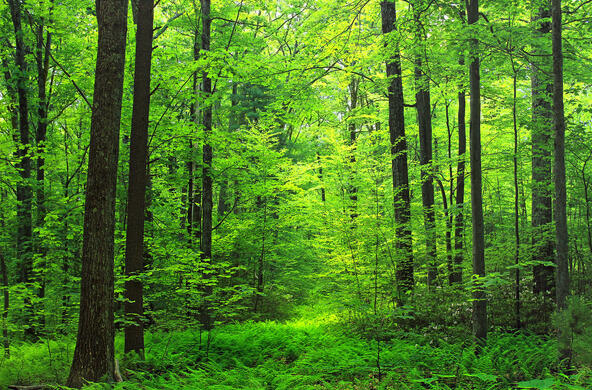Ecologists love species diversity. But it remains a major conundrum why the highest diversity of plants is most often associated with nutrient-poor soils, rather than in the rich, fertile soils where plants grow best. One of the highest counts of plants that I know of was reported for a frequently burned, sandy soil in the Green Swamp in North Carolina, where there was an average of 35 species per square meter. A combination of low fertility and frequent disturbance seems to prevent a few species from dominating the rest at this site.
Not surprisingly, plants have different efficiencies in nutrient uptake. Plants living in nutrient-poor habitats invest more energy in the growth of fine roots, enzymes for nutrient transport, and the symbiotic (mycorrhizal) fungi that aid in nutrient uptake. Plant ecologists express nutrient uptake efficiency as the amount of a nutrient, like nitrogen, taken up per unit of root growth per unit of time. High nutrient uptake efficiency comes at a cost to plants, because energy devoted to root growth and nutrient uptake is energy that cannot be devoted to the growth of leaves that fuel the overall plant growth.
Numerous studies show declines in species diversity when soils are fertilized. The fertilized plot is dominated by a few species that show rapid growth, often shading out all competitors. When you fertilize a nutrient-poor plot of land, the species adapted to low nutrients are outcompeted by species that do not devote as much energy to nutrient uptake, which outgrow the species adapted to nutrient-poor soils. Many grasses are adapted to a high-nutrient diet; home gardeners know that fertilizing a lawn will help keep out the weeds.
All this explains why ecologists are increasingly concerned about higher levels of nitrogen deposition from the deposition of air pollution. The nitrogen deposited from the atmosphere acts as a fertilizer, promoting the dominance of a few profligate species with low nutrient-uptake efficiency at the expense of species with higher nutrient-use efficiency and adapted to nutrient-poor soils. Across European meadows, species diversity has declined in areas where nutrient-deposition is greatest. The effects are subtle, but cumulative, so that a depauperate flora is left behind.
Along with climate change, widespread nitrogen deposition is likely to take its toll on nature’s diversity. Fortunately, if we reduce the deposition of nitrogen air pollutants in nature, much of its biodiversity will return. This should be a clear choice for thoughtful folks.
See also: Why species matter
References
Austin, M.P. and B.O. Austin. 1980. Behaviour of experimental plant communities along a nutrient gradient. Journal of Ecology 68: 891-918.
Cleland, E.E., and W.S. Harpole. 2010. Nitrogen enrichment and plant communities. Annals of the New York Academy of Sciences 1195: 46-61.
Goulson, D. 2013. A Buzz in the Meadow: the Natural history of a French Farm. Picador, New York.
Hautier, Y., P.A. Niklaus, and A. Hector. 2009. Competition for light causes plant biodiversity loss after eutrophication. Science 324: 636-638.
Huenneke, L.F., S.P. Hamburg, R. Koide, H.A. Mooney, and P.M. Vitousek. 1990. Effects of soil resources on plant invasion and community structure in California serpentine grassland. Ecology 71: 478-491.
Kempton, R.A. 1979. The structure of species diversity and measurement of diversity. Biometrics 35: 307-321.
Li, Y and 8 others. 2016. Increasing importance of deposition of reduced nitrogen in the United States. Proceedings of the National Academy of Sciences U.S. doi: 10.1073/pnas.1525736113
Stevens, C.J., N.B. Dise, J.O. Mountford, and D.J. Gowing. 2004. Impact of nitrogen deposition on the species richness of grasslands. Science 303: 1876-1879.
Storkey, J. and 7 others. 2015. Grassland biodiversity bounces back from long-term nitrogen addition. Nature 528: 401-404.
Tilman, D. 1987. Secondary succession and the pattern of plant dominance along experimental nitrogen gradients. Ecological Monographs 57: 189-214.
Walter, C.A., M.B. Adams, F.S. Gilliam and W.T. Peterjohn. 2017. Non-random species loss in a forest herbaceous layer following nitrogen addition. Ecology 98: 2322-2332.
Walker, J. and R.K. Peet. 1984. Composition and species diversity of pine wiregrass savannas of the Green Swamp, North Carolina. Vegetatio 55: 163-179.








